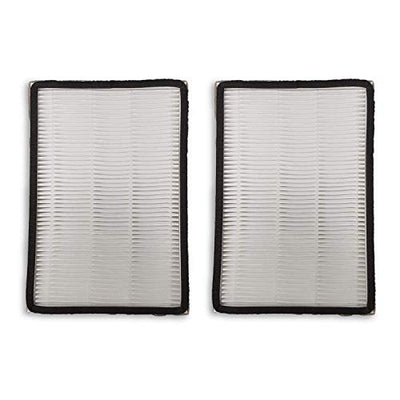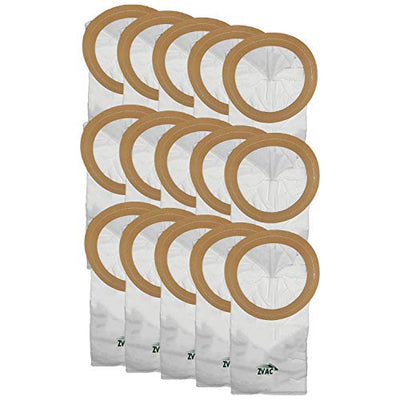What Is a Vacuum Cleaner?
Whether you’re a genuine neat freak, a bit of a (loveable) mess, or someone who falls somewhere in the middle, we all need to tidy up our homes at some point. Dusting, mopping, and generally picking up are all part of this, but for the folks who have carpet, vacuuming is perhaps the most important and non-negotiable. However, despite how necessary vacuuming is, very few of us understand much about the machines. To fix that, here’s everything you need to know about vacuum cleaners – the basics, history, and how to pick one.
What is a Vacuum Cleaner?
A vacuum cleaner, also known as simply a vacuum, or a hoover if you happen to be British, is a machine that uses suction to remove dust, dirt, pet hair, and other debris from floors or other surfaces in your home. This debris is then stored either in a replaceable sealed dust-bag or in an emptiable compartment/container for later disposal.
Beyond just the aspect of disposal, vacuums can vary dramatically from model to model and brand to brand. Some are heavy, bulky, and difficult to maneuver, whereas some are incredibly light and flexible, able to get in tight spaces and around corners. Some rely on a cord plugged into an outlet for power, and some smaller, stick vacuums trade the irritating cord for convenient wall charging or even just a few batteries. There is also a myriad of vacuum cleaner types to choose from these days: from small handhelds perfect for little messes to central units that allow greater ease of use, and even to robot vacuums that do all the hard work for you.
Regardless of the specifics of each machine, though, their function remains mostly the same. They’re still there to suck up unwanted dirt, keeping your home looking its best and your dust-driven allergies at bay. The fancy added gadgets, brand names, and technology are nice, but the most important thing is to just find a vacuum cleaner that works for you.
Brief History of Vacuums

Vacuum cleaners are one of the most essential household gadgets around, but they weren’t always like that. The vacuum as we know it today has only been around a hundred years plus change. The first domestic-marketed cleaner was invented in 1905 by an English manufacturer known as Walter Griffiths. Much like the vacuums in our own homes, it was portable and easy to use, although it had a couple of key differences. The first of these is that it was not electric. It also differed in that it was largely considered a “luxury item” priced far too high for the average person to buy.
Both of these factors would change over time as new inventors came onto the scene. By 1908, a slightly more recognizable design was already available thanks to a department store janitor named James Murray Spangler, who invented the first portable, motorized vacuum that used a rotating brush to loosen dirt as well as an electric fan and pillowcase for debris collection. Spangler then sold his patent to Hoover, which would create the beater bar, disposable filter bags, and the first upright vacuum all by 1926. These inventions, combined with the post-WWII era economy, spurred the more modern vacuum cleaner tech and middle-class availability we now know.
How to Find the Right One

As we said before, our biggest advice is to ignore all the buzzwords and hype associated with vacuum cleaners these days and focus on finding one that’s the right fit for your needs. Of course, finding a vacuum that doesn’t suck (pun very much intended) isn’t always the most straightforward endeavor. What works for one home might not work for another, whether that’s because of lifestyle differences, pet hair and dander, floor type, carpet texture, etc. So, how exactly are you supposed to narrow your choice down and fit a good fit? Here are a few of our biggest tips for picking a vacuum cleaner:
- Consider how much ground you’ll cover. Before you go to your store of choice or buy the first vacuum you see on Amazon, you should consider the area you’re planning on vacuuming. Have a big house, a bigger vacuum will probably suit you better since that typically means it can hold more and won’t need to be emptied as frequently. They also usually have been suctioning power than smaller ones, so you won’t have to go over your floors more than once to get a good clean. On the other hand, if you have a small home or apartment and don’t generate a lot of mess, a lightweight cordless is likely to do the trick!
- Keep your pets in mind. New pet owners probably aren’t thinking about vacuums when they bring their new, furry friend home. But those of us who’ve had pets for quite a while now know that finding a good vacuum when you have a cat or a dog can be challenging. Pet hair, especially fine, long, soft fur, has a tendency to stick to everything – even more unfortunate because there tends to be a lot of it. Getting this up requires a fair amount of power, meaning you have to have the right tool for the job. Always look for a vacuum labeled “for pet hair” or for anything that reports better suction. You’ll thank us later.

- Decide on must-have features. Absolutely can’t stand tripping on cords? Refuse to use anything more than a couple of pounds? Can’t stand vacuuming and want something that’ll do it for you? All are great questions to ask because it’ll help point you towards the features you absolutely need like cord rewind functions, lightweight designs, or automatic schedules on robot vacuums.
- Choose between bags and bagless. The kind of debris receptacle isn’t the end-all, be-all of a vacuum, but it should be considered when on the market for one. Bags are convenient and more hygienic, but bagless is eco-friendlier and more cost-efficient. Consider which one’s better for you before buying.
 |
 |
Canister Vacuum Cleaners
Upright Vacuum Cleaners
Sebo Automatic X7 Upright Vacuum - Red |
Sebo 9855AM Dart Upright Vacuum w/ET-1 Power Head (Arctic White) |
 |
 |
 |
 |
Backpack Vacuum Cleaners
Central Vacuum System
ZVac Central Vacuum System with 700 Air watts 26.5 L Tank Capacity Power Unit Vac - Model ZCVS-1 Central Cleaner with Central Vacuum Accessories Kit























